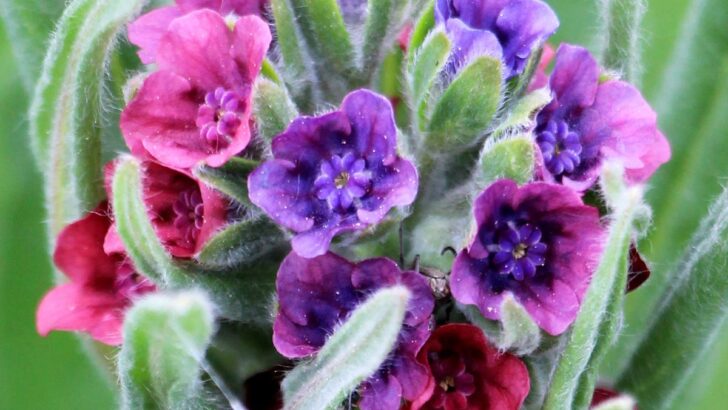The state of North Dakota currently recognizes 13 noxious weeds within its borders. Not only are these invasive species illegal to distribute or sell, but they cause significant damage, both financial and otherwise, to agriculture, outdoor recreation, rural and urban landscapes, and wildlife habitat. As a gardener, you can help control the spread of invasive plants in North Dakota by learning to identify these 13 noxious weeds. Then if you recognize one on your property, you can take action to properly remove it — and begin the fun of replacing it with a beautiful native plant!

Invasive Plants in North Dakota
Check with your local Extension office for help with how to properly remove any noxious weeds you may find in your landscape. Different plants respond better to different control methods! Each of the plant descriptions in this list also includes recommended native alternatives to plant instead.
1. Absinth wormwood (Artemisia absinthium)

A fragrant perennial herb, absinth wormwood grows three to five feet tall from a large taproot. It has a woody base and light green, deeply lobed leaflets. Fine, silky hairs cover the entire plant, lending a grayish hue. From late July into mid-August, a profusion of tiny yellow flowers blooms on stalks emerging from upper leaf nodes.
Common yarrow (Achillea millefolium) is a lovely native alternative, with with a similar height and bloom time, creamy flower clusters, and fragrant, ferny foliage.
Tenpetal blazingstar (Mentzelia decapetala) also has many similarities, including deeply lobed foliage and pale yellow flowers.
2. Canada thistle (Cirsium arvense)

Commonly recognized by its prickly leaves and tufted flower heads, Canada thistle is a two- to three-foot perennial with an extensive root system. A number of varieties means that leaf shape may vary, though the leaves tend to be deeply cut, and flower color can range from white to purple.
Wild bergamot (Monarda fistulosa) features large, purplish, tufted flower heads and a pleasant minty fragrance.
In addition to purple flowers, purple prairie clover (Dalea pupurea) has finely cut foliage.
3. Dalmatian toadflax (Linaria dalmatica)

Dalmatian toadflax produces spikes of bright yellow, two-lipped flowers like snapdragons. It blooms late June through August and then produces brown to black, disc-shaped seeds with irregular papery wings, though it also spreads via rhizomatic roots. Its heart-shaped leaves clasp the stem, which becomes woody toward the base. Dalmatian toadflax averages three feet tall.
For spikes of yellow flowers, plant a native goldenrod, like Missouri goldenrod (Solidago missouriensis), or wild licorice (Glycyrrhiza lepidota).
4. Yellow toadflax (Linaria vulgaris)
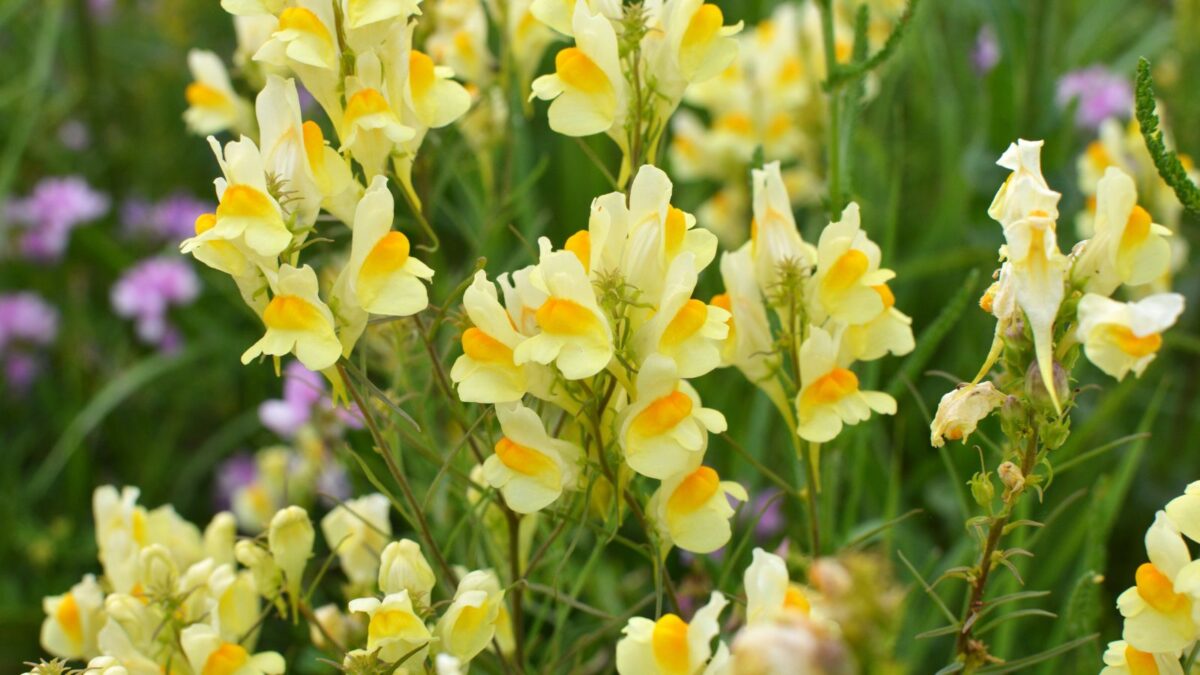
Very similar to Dalmatian toadflax, yellow toadflax also has spikes of two-lipped, yellow flowers that bloom from late June through August. The most obvious difference between the two is that the leaves of yellow toadflax are narrow and linear and don’t clasp the stem. It also grows slightly shorter at 18 to 36 inches tall.
Showy goldenrod (Solidago speciosa) is another pretty goldenrod, and Maximillan sunflower (Solidago speciosa) also makes for a nice tall yellow flower.
5. Diffuse knapweed (Centaurea diffusa)

A short-lived perennial, diffuse knapweed spreads exclusively by seeds, which can remain viable for five years or longer. It forms a rosette of deeply lobed leaves, with two- to four-foot stalks that flower July through August. The somewhat thistle-like blooms are light purple to pale pink and sometimes white.
Native plants with similar heights, bloom times, and pink or purple flowers include Rocky Mountain beeplant (Cleome serrulata) and smooth blue aster (Symphyotrichum laeve).
6. Russian knapweed (Rhaponticum repens)
Unlike its cousins, Russian knapweed is a long-lived perennial with deep roots and a shrubby habit, and it reproduces most commonly via root stocks. It does have lobed lower and entire upper leaves and pale pink to lavender flowers, though it has a longer bloom time of June to September. Look for rounded bracts with transparent tips and dark brown to black, scaly roots.
Similar native plants include button blazing star (Liatris aspera) and scarlet gaura (Oenothera suffrutescens).
7. Spotted knapweed (Centaurea maculosa)
Spotted knapweed is almost identical to diffuse knapweed. It’s a two- to four-foot short-lived perennial with a rosette of deeply lobed leaves, it reproduces by seed, and it blooms in July and August with light pink to lavender or white flowers. To differentiate the two, look for the stiff, black-tipped bracts of spotted knapweed.
Plant large beardtongue (Penstemon grandiflorus) or dotted blazingstar (Liatris puncata) instead.
8. Houndstongue (Cynoglossum officinale)

A biennial or short-lived perennial, houndstongue starts out as a basal rosette of hairy, ovate leaves with smooth edges, long stalks, and pointed tips. In its second year, the plant grows up to four feet tall and blooms from May into July. Racemes of tiny, purple to maroon, saucer-shaped flowers emerge from the leaf axils. The half-inch, four-sectioned fruits that follow are covered in hooked barbs.
Native prairie smoke (Geum triflorum) features unique, feathery, reddish-purple flowers and would make an interesting alternative to houndstongue. Leadplant (Amorpha canescens) also has lovely purple flowers and a similar bloom time.
9. Leafy spurge (Euphorbia esula)

Leafy spurge is easy to identify by its linear, blue-green leaves and milky sap. This long-lived perennial has a woody crown beneath the soil from which multiple upright stems grow two to four feet tall. In late May and early June, flat-topped clusters of yellow bracts appear to “bloom,” thought the true, inconspicuous flowers bloom afterward. Seed pods follow the tiny green flowers and burst when mature.
Golden Alexander (Zizia aurea) also blooms in late spring with yellow, flat-topped flower clusters, as does the similar heart-leaf Alexander (Zizia aptera).
10. Musk thistle (Carduus nutans)
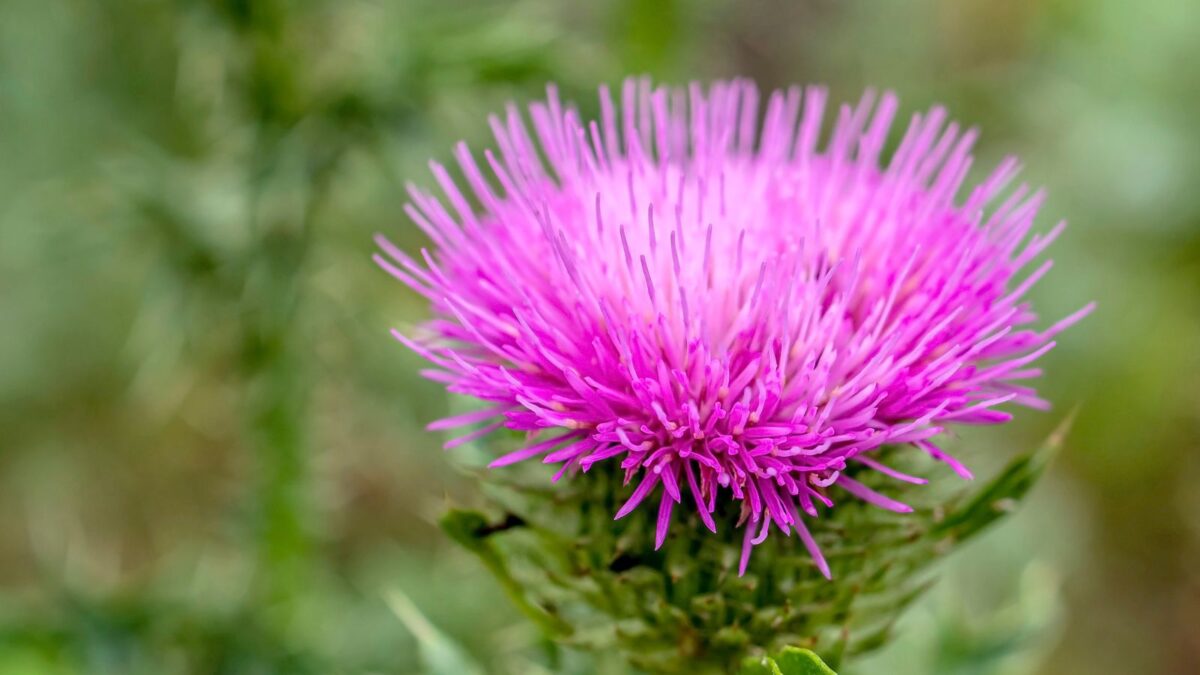
Musk thistle often grows six feet or taller, with two-foot-wide rosettes of dark green leaves featuring a pale midrib and lacking pubescence. Spiny wings appear interrupted along the length of the highly branched stems. The characteristic large, solitary flowers are deep rose with brown bracts and tend to droop.
Like something of an inverse musk thistle, purple coneflower (Echinacea angusifolia) has pinkish petals and a brown center. Blanket flower (Gaillardia aristata) also offers a unique alternative, with a purple-brown center and petals that radiate outward from red to yellow.
11. Palmer amaranth (Amaranthus palmeri)
An aggressive grower, Palmer amaranth can grow two to three inches per day to reach a maximum height of six to eight feet. It has diamond- to oval-shaped leaves with petioles (stems) at least as long as the leaves themselves, and the leaves sometimes have a small spike or hair at the tip. This prolific seed producer sends up a long, narrow, terminal seed head that is prickly on a female plant and soft for males.
Far more attractive native plants can be planted in its place, such as yucca (Yucca glauca) with its greenish white flower spikes. Or choose a native grass, like big bluestem (Andropogon gerardii).
12. Purple loosestrife (Lythrum salicaria, L. virgatum)
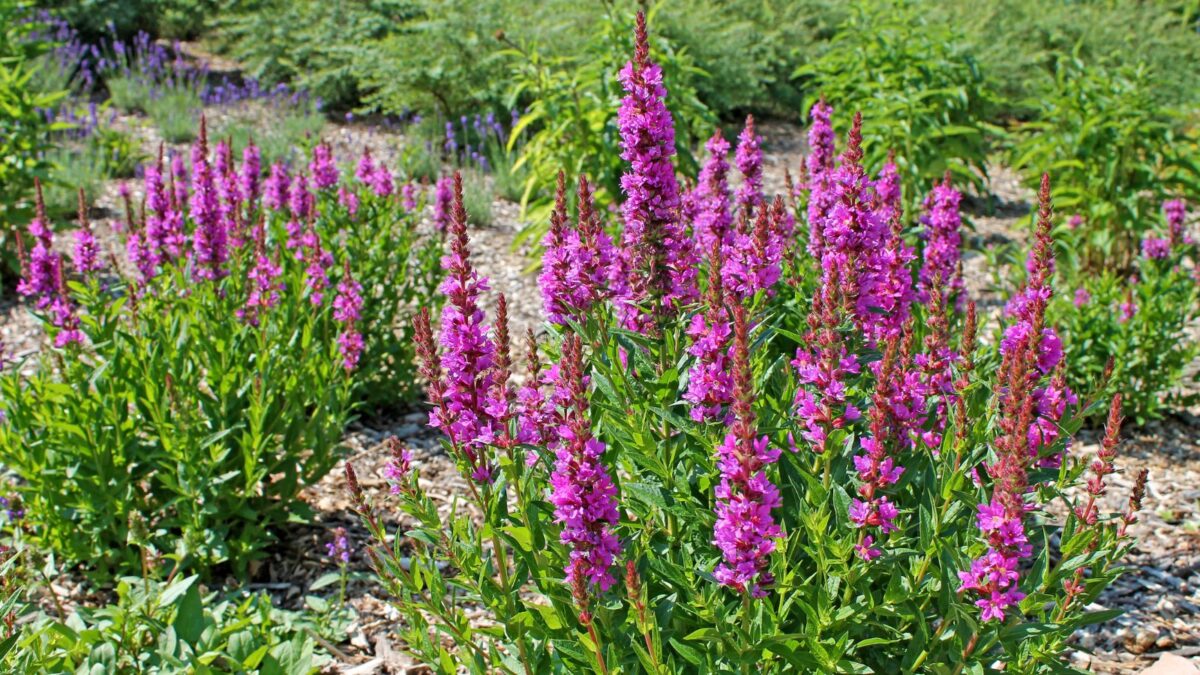
The erect stems of purple loosestrife grow anywhere from one and a half to eight feet tall. This rhizomatic perennial forb has narrow, opposite to whorled leaves with entire margins. From early July to mid-September, it produces striking purplish flower spikes up to three feet long. Two-celled seed capsules follow.
For native plants with spikes of purple flowers, choose lavender hyssop (Agastache foeniculum) or hoary vervain (Verbena stricta).
13. Saltcedar (Tamarisk spp.)

A shrubby bush or tree, saltcedar ranges in height from five to 20 feet. The small, flat, scaly leaves resemble those of cedar or arborvitae, and the bark tends toward a reddish brown. Five-petaled, white to pink flowers bloom in mid to late summer. Each tiny, pepper-like seed has a pappus, or tuft, for wind distribution.
Plant the very similar Rocky Mountain juniper (Juniperus scopulorum) or another native small tree or shrub, like hedge cotoneaster (Cotoneaster lucidus), instead.
Because of the negative impacts these noxious weeds have on native ecosystems and human activities, the state of North Dakota forbids their distribution within the state. You can help fight against these invasive plants by replacing any you find on your property with beautiful native species!
Try These North Dakota Native Plants Instead
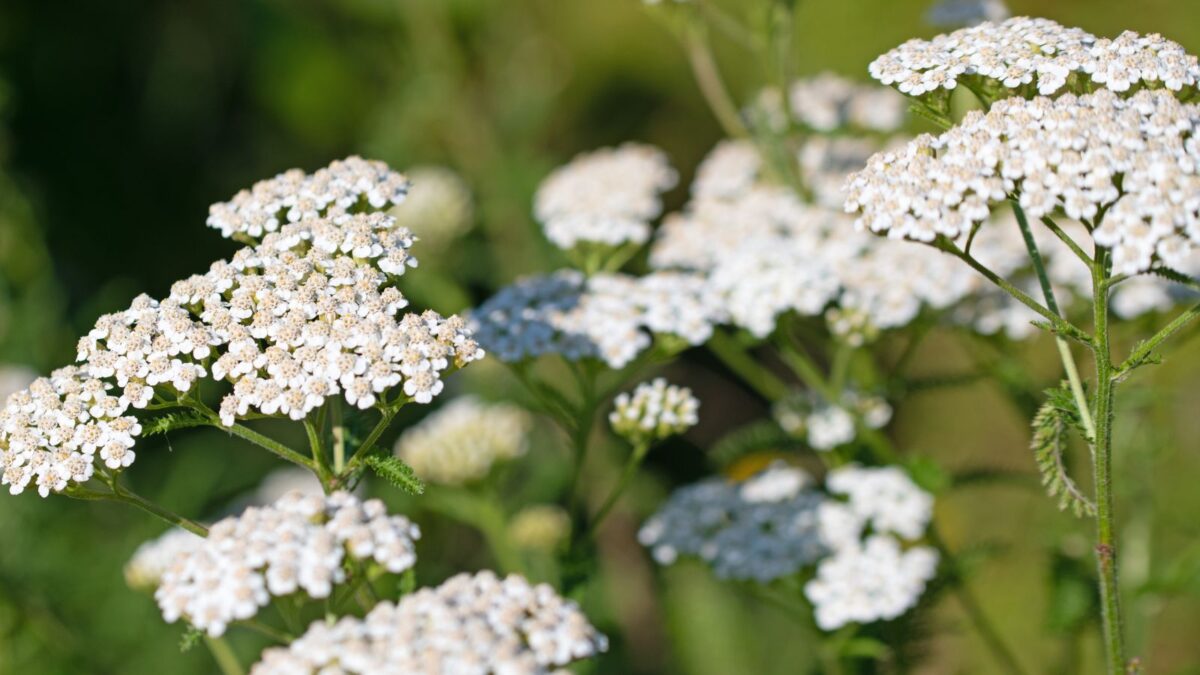
If you have any of the above plants in your yard, make an effort to remove them, and instead, plant a few native plants. This North Dakota native plants list will give you an idea of the beautiful variety of native plants in your own state. They are so much easier to grow and don’t require much time and energy, since they are adapted to your local conditions.
If You Like Simple, Plant A Native Wildflower Meadow
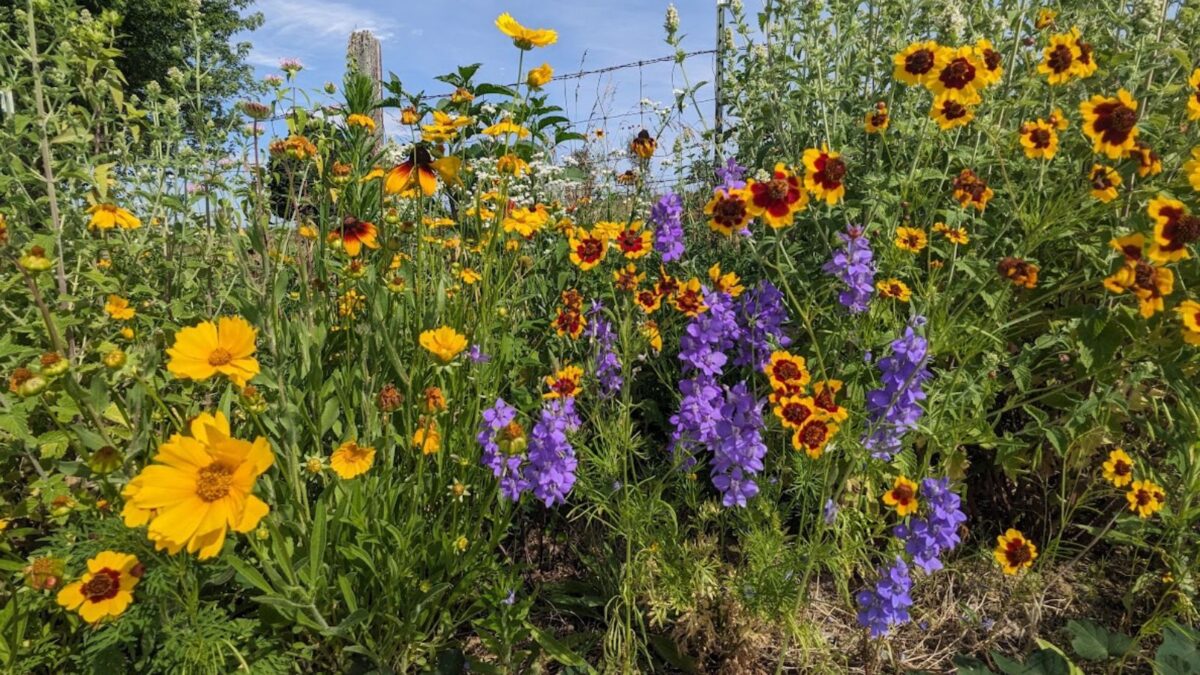
Attract and support pollinators like butterflies and bees, songbirds, and other wildlife. Even a tiny patio garden can provide much-needed habitat for native creatures. Check out these beautiful native wildflowers.

